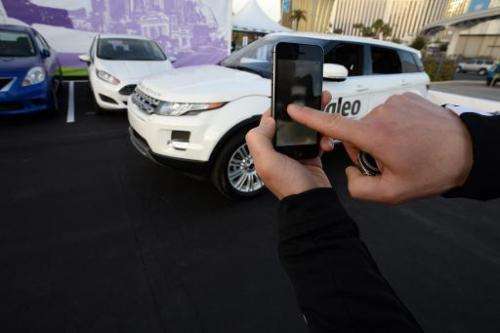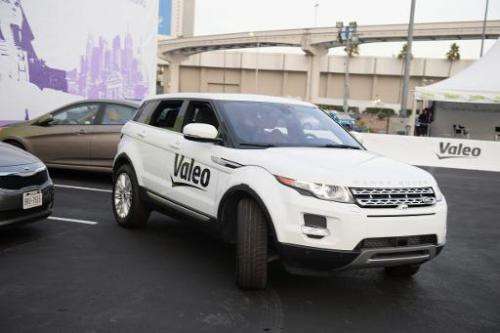Electronic valet parks the car, no tip required

There is no one inside the Range Rover in a Las Vegas parking lot. But it still guides its way to a parking place, after what looks like some hesitation.
The self-parking is directed by an app which controls the vehicle, detects an available space and maneuvers into it.
The "automated parking valet" created by the French equipment maker Valeo is among the technology innovations for the sector on display at this week's Consumer Electronics Show.
While the idea of a fully autonomous car is a dream for some, this is a step which promises to alleviate at least some of the tedium facing motorists.
The system allows drivers to leave their car at the entrance of a parking lot and let it find a space to park itself. Drivers activate the feature from their smartphone, and can also use it to summon the car to pick them up.
"It's like a brain," said Guillaume Devauchelle, a Valeo vice president presenting the prototype system at the huge electronics expo.
"It acts step by step, with a certain latitude, to be able to adapt to the situation," Devauchelle told AFP.
"If it is put in the same position for a second time, it won't react the same way."
The system does not require garages or parking lots to have special equipment, the executive said. It relies on the kinds of sensors some cars already use, with some extra electronics.

Devauchelle said the system may require a camera to recognize and avoid spaces designated for the handicapped or unusual features in a garage.
He said the system was designed to be as simple as possible so that it would not be only for luxury vehicles.
"We would like to make this available to the largest number of people," he said.
Even as automakers work on self-driving vehicles, a number of improvements can be made along the way, Devauchelle said, indicating the parking valet is not simply a matter of convenience.
It can help avoid the kinds of accidents frequent in parking areas and allow elderly people who find it difficult to make parking maneuvers to use their cars more often.
"As you age, turning your head becomes harder, so parallel parking is very difficult," the Valeo executive said.
"Parking maneuvers, in our estimation, are the most difficult for motorists."
Valeo said three million cars already have its semi-automatic system, which can perform parallel parking but require the driver to remain at the wheel.
The company said it has also sold a system that uses remote control but requires the driver to remain in view of the car or the smartphone screen as a safety precaution.
Devauchelle said the automated parking valet is adapted well for rental car fleets but added that regulations about driver requirements "from the horse and buggy era" need to be reviewed.
© 2014 AFP





















